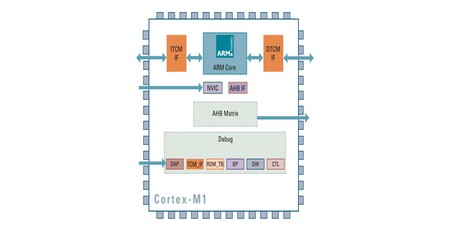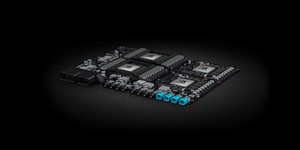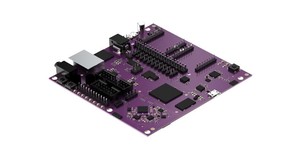
Arm has once again telegraphed its concern over the rise of free and open source silicon (FOSSi) efforts like RISC-V, announcing that it is making selected Cortex-M processor cores available fee-free for use with Xilinx-based field programmable gate array (FPGA) projects.
Traditionally, getting started with building your own custom silicon has been an expensive venture: While you can outsource the cost of production, providing you're targeting a high enough volume, companies like Arm charge millions of pounds to licence their processor intellectual property (IP) - leaving most start-ups simply picking up off-the-shelf silicon and making do. The free and open source silicon (FOSSi) movement is changing that: Providing processor cores, many based around the popular RISC-V instruction set architecture, for completely free reuse and modification under permissive open source licences - to the point where it's now possible to launch an entire silicon company and its first-generation products for less than the cost of licensing a single core IP from Arm or its equivalents.
That has Arm concerned: While most FOSSi cores aren't quite ready to compete with the company's high-performance processors yet, they're getting there - and are already competitive for low-power and embedded use. That the company is becoming increasingly concerned is no secret: Earlier this year it launched an aggressive marketing campaign aimed at pushing people away from RISC-V and towards its proprietary cores, which - as it should have expected - backfired spectacularly.
Now, the company is trying again - and it's using the carrot rather than the stick this time, offering companies Cortex-M processor IP free-as-in-beer providing they're building their projects on Xilinx' field programmable gate array (FPGA) devices.
'It is now possible to gain fast, completely no cost access to proven, soft processor IP, easy design integration with Xilinx tools and comprehensive software development solutions to accelerate success on FPGA,' explains Arm's Phil Burr of the move. 'Cortex-M processors give embedded developers the opportunity to design confidently, innovate and benefit from simplified software development and superior code density. In addition, they have the support of the broadest technology ecosystem of software, tools and services providing a valuable and accessible path on which to scale products.'
Arm's new offering provides immediate access to the Cortex-M1, a Cortex-M0 variant tailored for FPGA use, and access to the more powerful Cortex-M3 from November, and requires no licence fee and no royalty payments. That these parts have been chosen makes the company's focus clear: Both are aimed primarily at low-power embedded markets where RISC-V and other FOSSi cores are beginning to make a real impact, including finding their way into products from Western Digital and Nvidia.
The company isn't making its own products open source, though: While no cash will change hands as a result of the new offer, customers still need to sign a licensing agreement restricting the core IP to be used only for ' the purpose of designing and having designed Integrated Product [and to] distribute Integrated Product' and warns that reverse engineering is strictly prohibited, that the cores can't be used to determine whether Arm has infringed any patents you own, to develop products which skirt Arm's own intellectual properties, as a reference for creating or modifying patents or patent applications, and 'for generating data for publication or disclosure to third parties, which compares the performance or functionality of the Deliverables with any other products created by you or a third party, or is indicative of performance, efficacy, reliability or quality, without obtaining Arm’s prior written consent' - meaning it can't be used to benchmark its performance against a FOSSi core running on the same FPGA.
For those not put off by the licence terms, the Cortex-M1 core can be downloaded now following free registration on the official website.

MSI MPG Velox 100R Chassis Review
October 14 2021 | 15:04








Want to comment? Please log in.